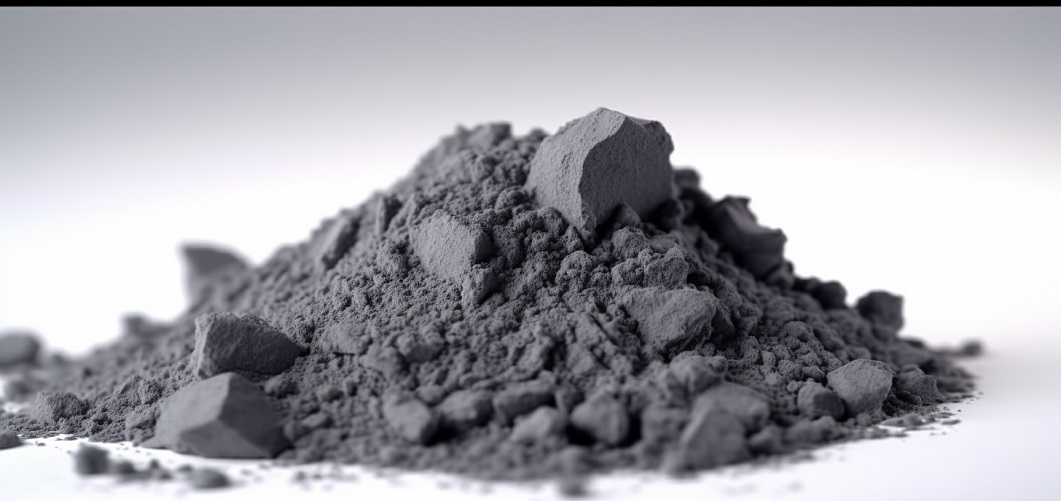

Stanford Advanced Materials provides customers with aluminum powder for use in diversified industrial applications. Featuring excellent thermal and electrical conductivity, it is ideal for application in additive manufacturing, coatings, and pyrotechnics for the aerospace, automotive, and electronics industries.

Aluminum powder is light while being one of the highly reactive metal powders. The uses of aluminum powder are immense. It is an ingredient for metallic paints, explosives, propellants, and thermite reactions. Common uses for this type of powder also are found within industries of metallurgy, pyrotechnics, paints and coatings, and aerospace. Aluminum powder is flammable, and a great deal of caution must be exercised to handle or store this material without any possible risks.
| Type | Purity | Shape | Particle Size |
| Atomized Aluminum Powder | >98% | Irregular | 8-500 mesh |
| Aluminum Silicon Alloy Powder AlSi10Mg | Irregular | 0-45μm, 0-53μm, 15-45μm, 15-53μm, 20-63μm, 45-105μm | |
| Al6061 | Spherical | 0-45μm, 0-53μm, 15-45μm, 15-53μm, 20-63μm, 45-105μm | |
| Al7075 | Spherical | 0-45μm, 0-53μm, 15-45μm, 15-53μm, 20-63μm, 45-105μm | |
| Titanium Aluminum Powder | 99.90% | Spherical | 15-45 (μm), or customized |
| Silver-coated Aluminum Powder | 99.90% | Spherical | 35-75 (μm) |
| Ferro Aluminum Powder | Non-Spherical | 45 µm, 150 µm | |
| Cobalt Aluminide Powder | Non-Spherical | ||
| Vanadium Aluminum Powder | >99.5% | -325 mesh | |
| Copper Aluminum Alloy Powder | Non-Spherical | -100, -200, -300 mesh |
AlSi10Mg: AlSi10Mg is the most widely used aluminum alloy powder in metal 3D printing, offering excellent castability, high strength, and good thermal conductivity. The silicon (Si) and magnesium (Mg) content enhances the hardness and wear resistance of printed parts while maintaining a low coefficient of thermal expansion. It is ideal for manufacturing lightweight structural components, heat sinks, and complex thin-walled parts.
Al6061: Al6061 is a heat-treatable aluminum alloy known for its well-balanced mechanical properties, corrosion resistance, and weldability. It is widely used in traditional manufacturing industries.
Al7075: Al7075 is an ultra-high-strength aluminum alloy with a tensile strength of up to ~500 MPa. It is extensively used in aerospace applications.
1. Lightweight and Corrosion-Resistant
With a density of only 2.7g/cm³, aluminum can be processed into various alloys including hardened aluminum, ultra-hard aluminum, corrosion-resistant aluminum, and cast aluminum, making it widely applicable across industries.
2. Excellent Electrical Conductivity
Aluminum ranks as the fourth best electrical conductor after silver, copper and gold. While its conductivity is approximately two-thirds that of copper, its density is merely one-third of copper's.
3. Superior Thermal Conductivity
Aluminum also serves as an outstanding thermal conductor with a thermal conductivity three times greater than iron. Combined with its exceptional ductility (second only to gold and silver), these properties make aluminum extensively versatile in applications.
Key Features:
Lightweight (2.7g/cm³) yet strong
Multiple alloy options for enhanced properties
High electrical (61% of copper) and thermal conductivity
Excellent formability and corrosion resistance
Wide industrial applications from aerospace to electronics
Because aluminum possesses a variety of excellent properties, it has extremely wide-ranging applications. Aluminum and aluminum alloys are currently among the most widely used and most economical materials available.
Pyrotechnics: Aluminum powder is widely used in fireworks and flares to create bright flashes and sparks.
Paints and Coatings: Due to its high reflectivity and corrosion resistance, it is ideal for pigments, providing metallic or pearlescent finishes.
Construction Materials: It enhances lightweight, high-strength concrete and building materials, improving durability and resistance to heat and corrosion.
Aerospace Industry: In aerospace, it is used to manufacture aircraft parts like wings and fuselages, reducing weight and improving fuel efficiency.
Additive Manufacturing: It is a key material in 3D printing, enabling the production of complex, lightweight, and strong structures.
Metal Pigments: Commonly used in metallic inks, plastics, and cosmetics, it imparts a metallic luster to products.
Chemical Reactions: As a reducing agent, it reacts with metal oxides to produce pure metals, such as in thermite welding.
Explosives: It is a critical component in explosives like ammonium nitrate and dynamite, aiding in the detonation process.
Thermal and Sound Insulation: Incorporated into insulation materials, it improves their ability to reflect and dissipate heat and sound energy.
Solar Industry: Used in solar cells and photovoltaic systems, it enhances efficiency by reflecting and absorbing sunlight.

